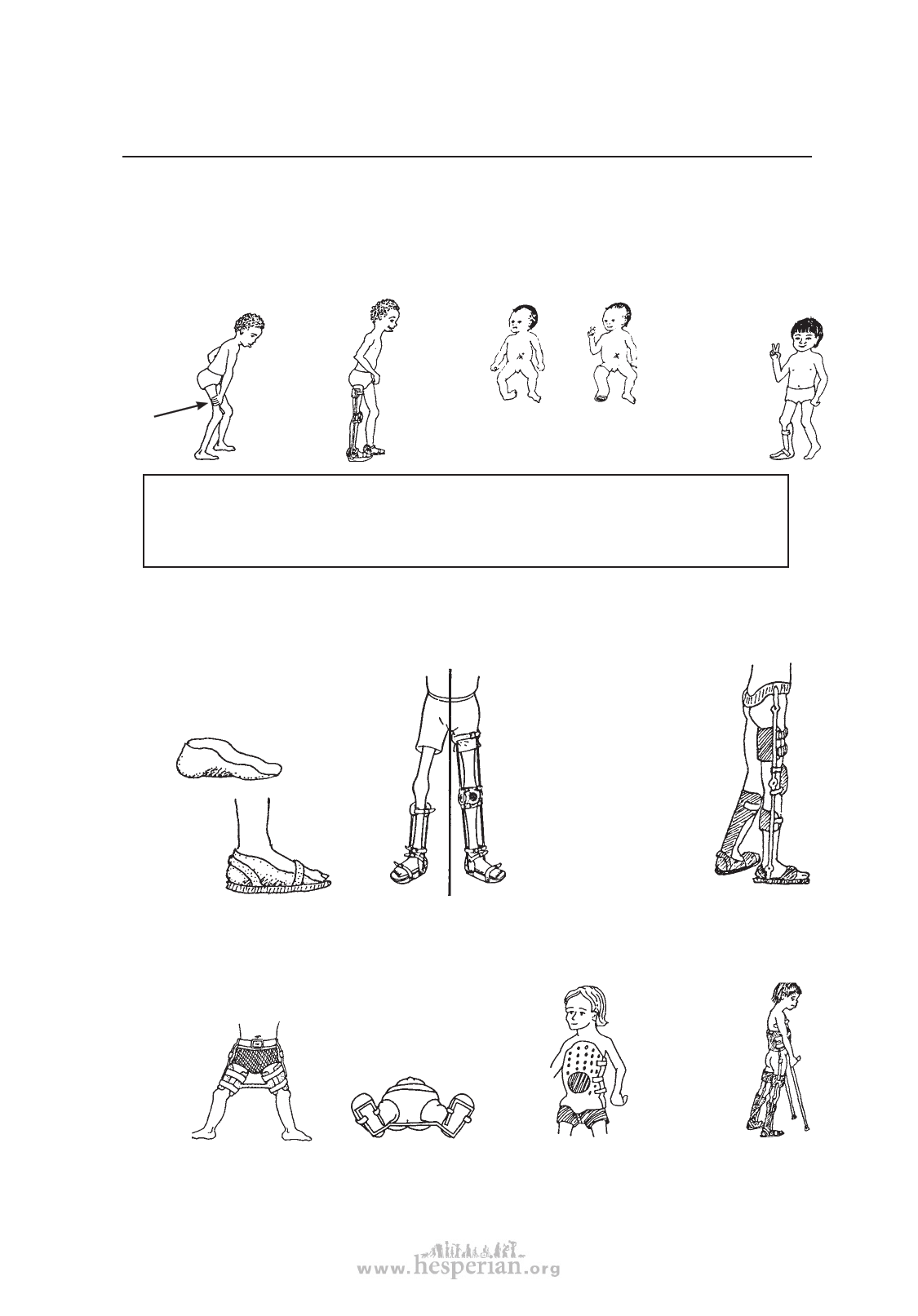
Braces (Calipers)
58CHAPTER
539
Braces are aids that help hold legs or other parts of the body in useful positions.
They usually serve one or both of 2 purposes:
1. To provide support or firmness to a
weak joint (or joints). For example,
this child had polio:
2. To help prevent or correct deformity
or contracture. For example, this
child had a club foot:
His leg is
too weak
to support
his weight
without
help.
This
brace
keeps
his knee
from
bending
forward
He was
born with a
club foot.
His club foot
was corrected
with a cast.
After
correction,
his foot is
kept in a
good position
with a brace.
CAUTION: The need for braces should be carefully evaluated. Braces should be used only if
they will help the child move better and become more independent. Too much bracing may
actually weaken muscles and cause greater disability. As a general rule, try to use as little
and as light bracing as possible to help the child function better. (See Chapter 56.)
Different braces for different needs
The main lower-limb brace types are:
Foot brace
usually
made of
molded
plastic
for deformities
in the foot
(not ankle)
such as severe
flat foot
Below-knee
braces (ankle
brace)
for weakness
or deformities
in the lower
leg, ankle,
and foot
Above-knee brace
(long-leg brace)
Above-knee
brace with
a hip-band
for weakness in
the upper leg
and knee—
possibly also
ankle and foot
for severe
weakness
in hips
and legs
Less commonly used types (described on p. 547 and p. 558) include:
Leg-separating
braces
for dislocated
hips or
damaged head
of thigh bone
(See p. 158.)
Foot-positioning
night brace
for holding the feet,
legs, and hips at a
set angle when they
tend to turn in
Body brace
or corset
for curve
of the
spine
Body brace with
leg braces
for body
and back
weakness
together
with hip
and leg
weakness